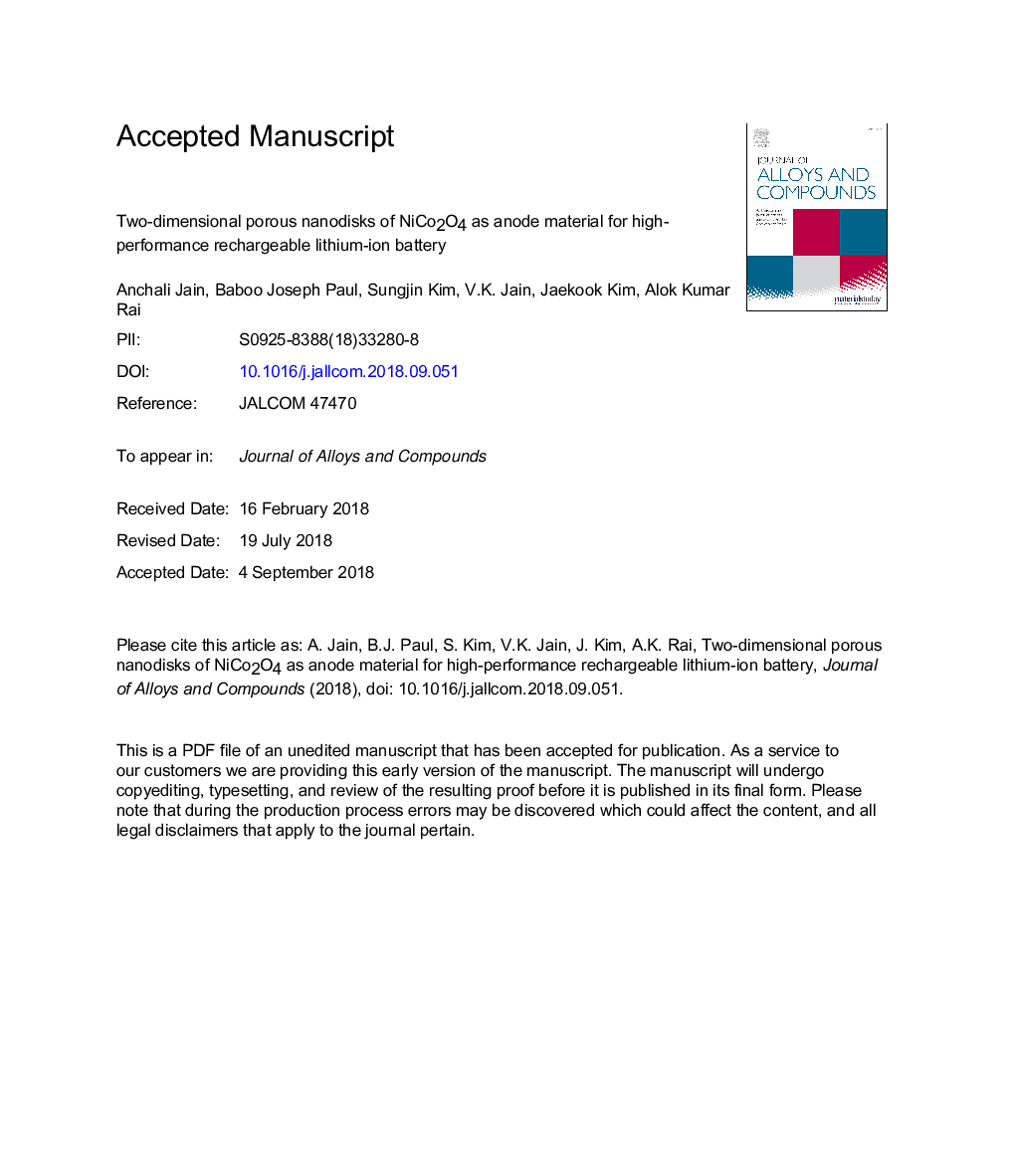| Article ID | Journal | Published Year | Pages | File Type |
|---|---|---|---|---|
| 10155938 | Journal of Alloys and Compounds | 2019 | 28 Pages |
Abstract
Two-dimensional porous nanodisks of NiCo2O4 have been synthesized by low temperature hydrothermal method followed by calcination at 500â¯Â°C/3â¯h/air. X-ray diffraction pattern confirmed the phase purity of the sample. Microstructure analysis clearly exhibits a unique porous nanodisks shape of NiCo2O4 sample. Brunauer-Emmett-Teller technique is also used to investigate the surface area and pore size of the sample. Electrochemical properties are evaluated via cyclic voltammetry and Galvanostatic cycling studies. NiCo2O4 as an anode exhibits excellent lithium storage capacity (673.9â¯mAh gâ1 at 0.5C after 350 cycles; 596.9â¯mAh gâ1 at 3.0â¯C after 200 cycles), high initial Coulombic efficiency (75%), long cycling stability (â¼80% capacity retention at 350 cycles) and better rate capability (552.5â¯mAh gâ1at 4.0â¯C), which is much higher than the theoretical capacity of graphite (372â¯mAh gâ1). This improvement can be attributed to the unique porous structure of the electrode, which allows maximum Li+ ion to react with electrode material, shortens the diffusion path length and increasing the electrode/electrolyte contact area.
Related Topics
Physical Sciences and Engineering
Materials Science
Metals and Alloys
Authors
Anchali Jain, Baboo Joseph Paul, Sungjin Kim, V.K. Jain, Jaekook Kim, Alok Kumar Rai,
